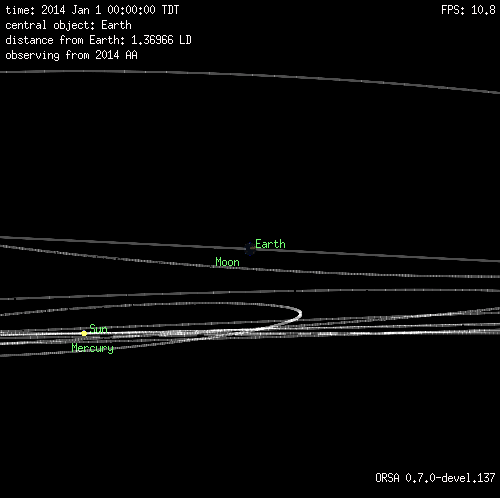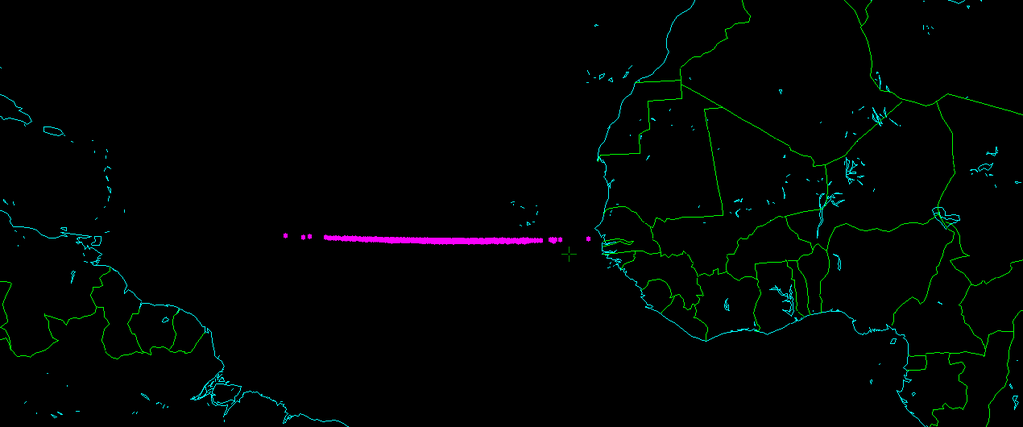This was very likely the last trip around the Sun for the Earth-crossing asteroid 2014 AA, according to calculations by several teams of astronomers and published online earlier today on the IAU’s Minor Planet Center. Discovered just yesterday by the Catalina Sky Survey, the estimated 3-meter-wide Apollo asteroid was supposed to clear Earth today by a razor-thin margin of about 611 km (380 miles)… but it’s now looking like it didn’t quite make it.
The diagram above, via Asteroid Initiatives’ Twitter feed, shows a projected path probability pattern for 2014 AA’s re-entry locations. No eyewitness accounts have yet been reported, and if anyone knows of any surveillance cameras aimed in those directions that might have captured footage of a bolide feel free to share that info below in the comments and/or with @AsteroidEnergy on Twitter.
Other calculations put the entry point anywhere between western Africa and Central America.
According to the MPEC report the asteroid “was unlikely to have survived atmospheric entry intact.”
Watch an animation below showing 2014 AA’s point-of-view as it met Earth. (Video courtesy of Pasquale Tricarico, senior scientist at the Planetary Science Institute in Tucson, AZ.)

JPL’s Near-Earth Object program classifies Apollo asteroids as “Earth-crossing NEAs with semi-major axes larger than Earth’s (named after asteroid 1862 Apollo).” And while not an Earth-shattering event (fortunately!) this is just another small reminder of why we need to keep watch on the sometimes-occupied path our planet takes around the Sun!
Read the NASA/JPL news release on 2014 AA here.
h/t to Dr. John Barentine for the heads-up!
UPDATE: Based on infrasound analysis by Peter Brown of the University of Western Ontario, 2014 AA likely impacted the atmosphere over the Atlantic around 0300 UTC at 40° west, 12° north — about 1,900 miles east of Caracas, Venezuela. The impact released the equivalent of 500 to 1,000 tons (0.5 – 1 kiloton) of TNT, but far above a remote and uninhabited area. Read more on Sky & Telescope here.

